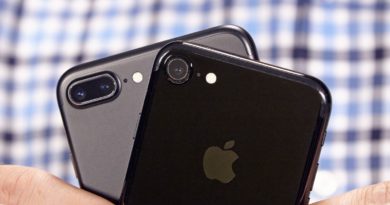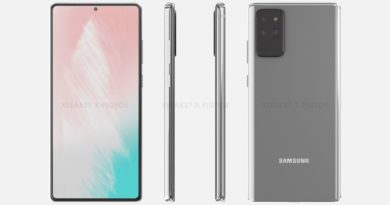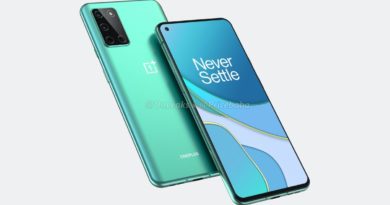Should you buy the iPhone 12? These are the 7 biggest upgrades
There are millions of people asking themselves the same question: Should I buy the iPhone 12? Whether you own an iPhone 7, iPhone 8, iPhone X, iPhone XR or even iPhone 11, you’re probably wondering whether the iPhone 12 is worth the hype.
There are four new iPhone 12 models to choose from, ranging from the 5.4-inch iPhone 12 mini and 6.1-inch iPhone 12 to the 6.1-inch and 6.7-inch iPhone 12 Pro and iPhone 12 Pro Max.
Because they’re more affordable, we’re going to focus on the $699 iPhone 12 mini and $799 iPhone 12, as these are the handsets most shoppers will wind up buying. Should you take the plunge? Here are the seven biggest iPhone 12 upgrades to help you decide.
iPhone 12 has sleeker designs with slimmer bezels

All four iPhones 12 models have the same new flat-edged design that harks back to the iPhone 4 — a high point in Apple’s industrial design — and sport narrower display bezels. The trimmed bezels result in designs that are more compact and easier to use with one hand than the iPhone 11.
For people fed up with the rise of bigger smartphones, the 5.4-inch iPhone 12 mini should be rather appealing, especially as it has the same specs as the standard iPhone 12. Apple fans with smaller hands are likely rush to the mini.
Apple’s also brought in a dark blue color for the iPhone 12 and iPhone 12 mini, which looks fantastic.

The display notch that holds all the sensor tech for Face ID, Apple’s face scanning tech, is still the same size it’s been since the iPhone X. Some people might find that a bit disappointing but Face ID has proven to be very secure, so the notch is a reasonable compromise.
Beauty is in the eye of the beholder, but we feel the new design of the iPhone 12 is very attractive and a worthy evolution of the iPhone 11’s design. It also looks a lot slicker and more modern than the iPhone XR with its chunky bezels.
iPhone 12 can better survive drops with Ceramic Shield

If you want your next iPhone to be more durable, the iPhone 12 and iPhone 12 mini are definitely worth your consideration. Both phones sport Apple’s new Ceramic Shield front cover that “goes beyond glass by adding a new high temperature crystallization step that grows nano-ceramic crystals within the glass matrix.”
That means the iPhone 12 is now rated to be four times more resistant to damage sustained from drops. We don’t advise you go around hurling the iPhone 12 at walls and sidewalks, but it’s good to know it should survive a few more accidental knocks and drops than older iPhones.
The iPhone 12 could also weather a good dunking in water or a heavy downpour better than older iPhones. That’s because the IP68 water and dust resistance for the iPhone 12 and iPhone 12 mini is now rated for depths of up to 6 meters for 30 minutes; that beats the iPhone 11’s 2 meters.
iPhone 12 embraces 5G for more speed

The iPhone 12 range is the first suite of Apple phones to come with 5G connectivity.
Depending on where you live 5G connectivity might be sparse. But it you’re in an area that supports it, then you’ll get much improved download and upload speeds on the iPhone 12 than on its predecessors.
5G connectivity will help you stream content on the move or downloading photos, videos and other files without needing to connect to Wi-Fi. Having a 5G modem in the iPhone 12 makes it a lot more future-proof than non 5G phones.
The iPhone 12 also has a clever Smart Data mode, which can help save battery life by automatically switching between 5G and 4G in real time.
Although it will take some time for app developers to take full advantage, 5G is one of the biggest upgrades to the iPhone 12 over older Apple phones.
iPhone 12 has camera upgrades galore

When it comes to photography, on paper the iPhone 12 and iPhone 12 mini’s pair of rear cameras don’t look like an upgrade over the iPhone 11. But the specs and computational photography capabilities are improved.
Plus, compared to the single rear camera on the iPhones 8 and iPhone XR, the addition of an ultra-wide angle lens on the iPhone 12 is a step up.
The iPhone 12 features a 12MP wide camera with a f/1.6 aperture and a an ultra-wide camera with a f/2.4 aperture with a 120-degree field of view, compared to a slower f/1.8 wide lens on the iPhone 11. As a result, the iPhone 12 lets in 27% more light for better low-light photos.
In addition, the ultra-wide camera on the iPhone 12 uses a 7-element lens compared to the 6-element lens in the iPhone 11’s main camera.

A big photography upgrade comes from the A14 Bionic chip. It will boost Apple’s already stellar computational photography and allow the iPhone 12 to deliver photos with better colors and contrast, as well as more texture and less noise.
Furthermore, with Smart HDR 3 able to tap into the machine-learning power of the A14 Bionic, the iPhone 12 will be able to deliver better automatic white balance and saturation for “remarkably natural-looking images.”
The iPhone 12 can capture HDR video in the Dolby Vision format. As one of the most advanced formats for high dynamic range Dolby Vision promises to deliver cinema-grade colors and contrast. You can also edit and play back those videos in Dolby Vision.
In short, the iPhone 12 and iPhone 12 mini promise class-leading cameras and could very well land on our list of best camera phones.
The iPhone 12 ditches LCD for OLED displays
Videos and photos viewed on the iPhone 12 and iPhone 12 mini set to look very impressive. That’s because Apple has equipped its two non-Pro phones with the Super Retina XDR display.

We’ve seen the OLED Super Retina XDR display on the iPhone 11 Pro, which is one of the best smartphone screens around. But the iPhone 11, iPhone XR, and iPhone 8 came with LCD displays. While good, they couldn’t compete with the colors, contrast and viewing angles of OLED panels.
But with OLED panels, the iPhone 12 is set to offer a major display upgrade over its predecessors. And with support for HDR content, viewing Dolby Vision videos on the iPhone 12 and iPhone 12 mini should make for great eye candy. While the iPhone 12 and iPhone 11 both offer 625 nits of maximum brightness, the iPhone 12 can go up to 1200 nits of peak brightness when viewing HDR content.
iPhone 12 has serious A14 Bionic power

The iPhone 12 and iPhone 12 mini both come with Apple’s new A14 Bionic chip, Having already made its debut in the iPad Air 4, the A14 Bionic promises a big upgrade over the A13 Bionic in the iPhone 11.
Built on a new 5-nanometer process, the A14 Bionic offers 11.8 billion transistors, spread across a six-core CPU and a quad-core GPU. According to Apple, that all translates to 50% better processor and 50% better graphics performance over the “fastest competing smartphone chips.” That’s likely to mean the Qualcomm Snapdragon 865 and 865 Plus.
Apple has said how much faster the A14 Bionic is over the A13 Bionic, but we’re expecting to see a big boost in performance. And the folks in Cupertino also boast that the A14 Bionic can deliver “console-quality gaming experiences.”
We’d need to experience that for ourselves, but going by previous advancements Apple has made with its smartphone chips, we’re expecting to be impressed here.
The A14 Bionic also comes with a 16-core Neural Engine, which promises an 80% hike in performance over the iPhone 11 and will blaze past older iPhones. All this means the iPhone 12 will be able to handle machine learning tasks a lot faster than other Apple phones. In turn, that means faster responses from Siri, as well as improved computational photography.
No charger in box, but MagSafe charging is here

The iPhone 12 and iPhone 12 mini don’t come with a charger in the box, which is a bummer. But these two new phones support MagSafe, Apple’s new magnet-based system for snapping accessories and wireless charging to the back of the iPhone 12 handsets.
MagSafe will not only let you pop a neat leather card holder onto the back of the iPhone 12, it also ensures the new MagSafe wireless charger is always aligned with the phone’s internal charging coil.
That means the IPhone 12 and iPhone 12 mini get access to 15W wireless charging rather than the 7.5W Qi charging of the iPhone 11 and older iPhones. If you want even faster charging, Apple is offering a 20W USB-C charger available.
There’s potential for MagSafe to enable other accessories such as tripods for the iPhone 12. But it’s early days and we’ll have to see what Apple and third-party accessory makers come up with.


